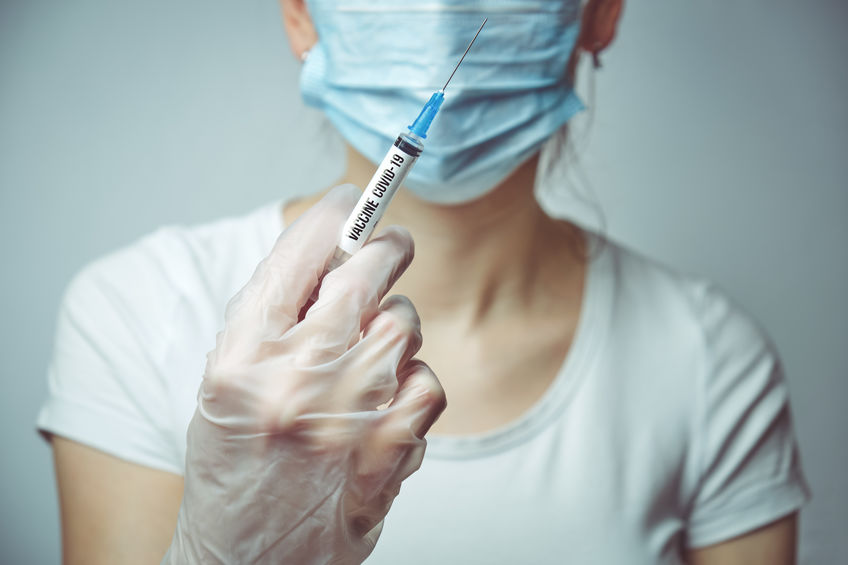In the new year, mRNA vaccines have proven to be a groundbreaking vaccination option. Unlike traditional vaccinations that use live or deactivated viruses to induce a resistant response, mRNA vaccines use a portion of the virus’s genetic material. But what makes these vaccines so active, and how do they just work? The thinkable uses of nanoparticles are one module of the solution.
Particles as small as one to one hundred nanometers are called nanoparticles. They can be made from numerous chemicals, such as metals, polymers, and lipids. Nanoparticles have become vital in medicine because of their small size and singular properties, especially for managing medicines and analytic imagery.
This article is about nanoparticles. Here, we also discuss the advantages of nanoparticles for drug delivery. Please read this article completely and get all the amazing data from it. We also read about the role of nanoparticles in our lives or medication.
The Role of Nanoparticles in mRNA Vaccine Transport
Now we discuss the role of nanoparticles in mrna in vaccine transport..
● Lipid-Supported Nanomedicines
Lipid nanoparticles, or LNPs, are the most common kind of nanoparticle in mRNA vaccines. They include lipids that can form a stable, defensive shell around the mRNA. LNPs are outstanding at conveying mRNA into cells, which is why they were rummaged to sell in the Pfizer-BioNTech and Moderna COVID-19 vaccines.
● Polymer-Based Nanoparticles
Polymer-based nanoparticles are a feasible alternative for shipping. These nanoparticles’ capacity to degrade at a controlled rate permits the mRNA to be released progressively.
Advantages of Nanoparticles for Drug Delivery
Here are a few main benefits:
● Improved Bioavailability
Pharmacologic bioavailability can be significantly amplified by using nanoparticles. The percentage of a medication that enters the circulation and reaches its target tissues is also referred to as permeability. Nanoparticles’ small size enables their successful passage through biological barriers and guarantees that a higher concentration of the medication reaches its target place. This leads to medicines that work better and might require fewer levels.
● Managed Discharge
The potential of nanoparticles to deliver regulated drug release is one of their most remarkable benefits. Being capable of creating nanoparticles to release their payload over a certain time helps the body maintain steady medication levels. By enhancing the total beneficial impact and lowering the frequency of doses, this controlled release mechanism can improve patient compliance and treatment outcomes.
● Improved Distribution and Penetration
Because of their tiny size, nanoparticles can spread equally throughout the body and puncture deeply into tissues. This makes it possible to put medication in places like tumors or the brain that would otherwise be difficult to access. Improved penetration makes sure that the treatment gets to all of the target cells, resulting in a more thorough yet effective course of therapy.
● Protection of Drug Molecules
By hiding medications within nanoparticles, especially reactive or unstable ones, safety can be offered to drugs. The medication is protected from environmental elements, including pH, enzymes, and light, by its capsule. Because of this, the medication keeps its potency to the maximum extent possible until it reaches its goal.
● Decreased Intoxication
The toxicity of many medications can be significantly lowered by using nanoparticle drug delivery systems, which offer accuracy as well as oversight. Nanoparticles can lessen the unfavorable side effects caused by classic medication delivery techniques by targeting sick cells and limiting exposure in healthy geographical areas.
● Versatility
Lipids, polymers, metals, and ceramics are just a few of the materials that can be used to make nanoparticles. Because of their versatility, nanoparticles can be used for competition-specific medications and action stresses. Unique qualities of different materials include the ability to transport different kinds of medications, such as proteins, nucleic acids, and tiny molecules, as well as their capacity for degradation and biocompatibility.
● Multipurposeness
It is possible to construct nanoparticles that have multiple simultaneous functions. In one example, they can release drugs in response to particular stimuli (such as temperature or pH changes) and deliver a mixture of medications. They can also offer imaging contrast for diagnostic use. This flexibility can improve the efficiency of therapies and provide important diagnostic data.
● Improved Solubility
The low water solubility of numerous medications affects their absorption into the body and therapeutic potential. These medications can become more soluble with the help of nanoparticles, thereby making it easier for the body to absorb them. This might improve effectiveness and patient compliance with medications that must be taken orally; therefore, it is very vital.
● Creative Uses
Drug delivery has fresh possibilities thanks to the special qualities of nanoparticles. For example, nanoparticles can be used in cancer therapy to deliver therapeutic medicines just to tumor cells or in gene therapy to transfer genetic data directly into cells. These cutting-edge uses may entirely alter how many diseases are treated.
Conclusion
When it comes to the formation of mRNA vaccines, nanoparticles are radical. Nanoparticles have the potential to change the vaccination marketplace by improving the consistency, efficacy, and transfer of these vaccines. We ought to expect far more interesting improvements in the application of nanoparticles for vaccine delivery as long as research and innovation are preserved.




